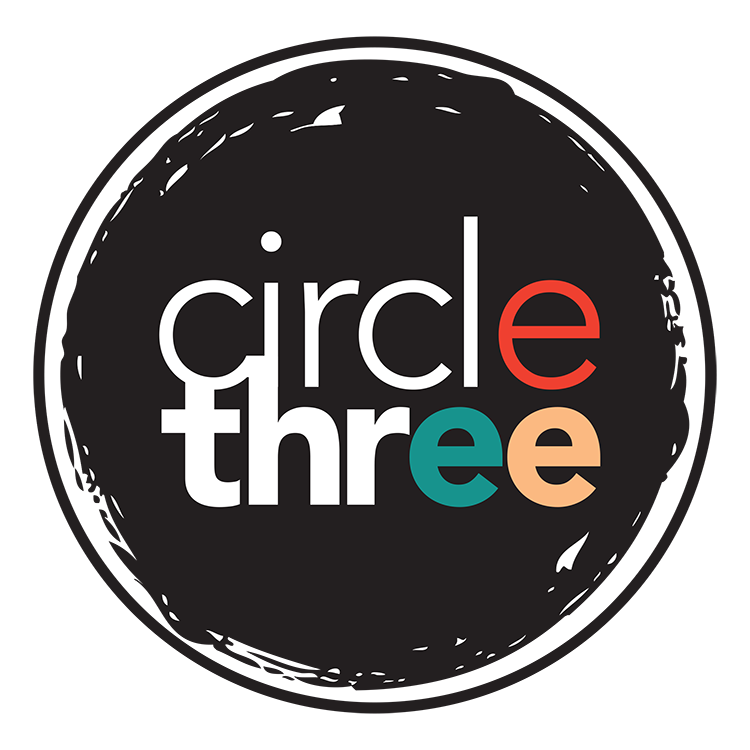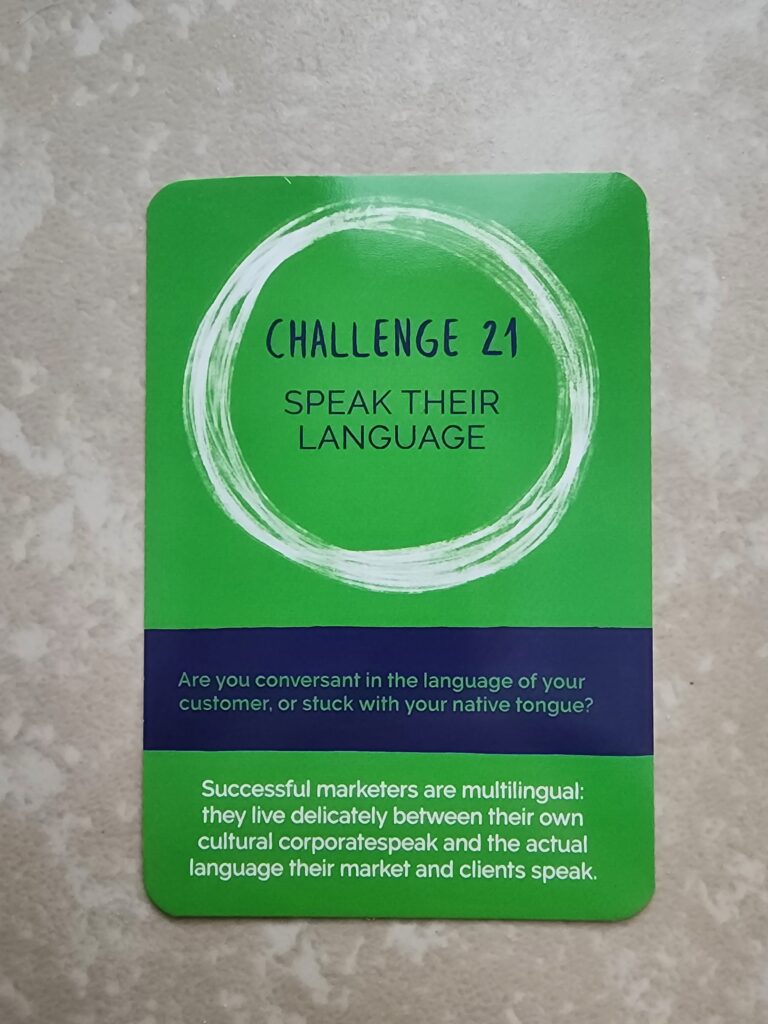Today, we’re talking about language. When your customers hear you talking about KPIs, resin codes, single stream recycling, holiday delays, commercial front loaders, and CNG, they’re potentially impressed by your expertise but most likely confused. They want you to keep it simple. Savvy marketers are bilingual in corporate jargon AND the language their customers speak.
The Origin of “Two Languages”
A note from Jessica Shrout, President of Circle Three Branding: If you know me, you know I have a pretty intense thirst for knowledge and I’m a collector: I collect facts and tidbits that will serve me later. This often comes in the form of books and tools that fill my library shelves. I was recently stuck in an airport between legs of a journey and found myself browsing the bookstore. That’s where I saw a deck of cards called “Marketing Mess to Brand Success,” by Scott Jeffrey Miller. Each card is meant to serve as a marketing challenge to change the way you think about marketing for your organization. I’ll be honest: I don’t love all of them, but some of them are worth conversation. So that’s what we’re going to do: talk about my favorite challenges. Over the next few months, I’ll post those favorites and we’ll explore what it means for waste, recycling, and sustainability organizations.
Two Languages in Business
Most of us in the business world speak two languages: one in the office and one out in the real world. One is casual and common. The other language is specialized. Only other insiders know it. Here’s an example: let’s say your emergency room physician orders a CBC and ABG. Would you know what these abbreviations stand for unless you were also in healthcare – and specifically in a field of healthcare that regularly deals with blood tests? Probably not. (It’s “complete blood count” and “arterial blood gas,” by the way.) You don’t have to because it’s not something you need to know. We often forget that in the waste, recycling, and sustainability world. Our common business language comes out because we’re fluent in it and we forget that the rest of the world isn’t…and they don’t care…and they also don’t need to care. They don’t live it. Our job is to remember this and reduce complexity in marketing whenever possible. That’s why it’s critical to switch back to your common language when marketing for your organization.
Tips for Speaking One Language in Marketing
Simplifying language without patronizing your audience is key to effective communication. Here are some strategies to help waste haulers, municipalities, and brands in the sustainability sector speak in a more relatable, understandable way:

